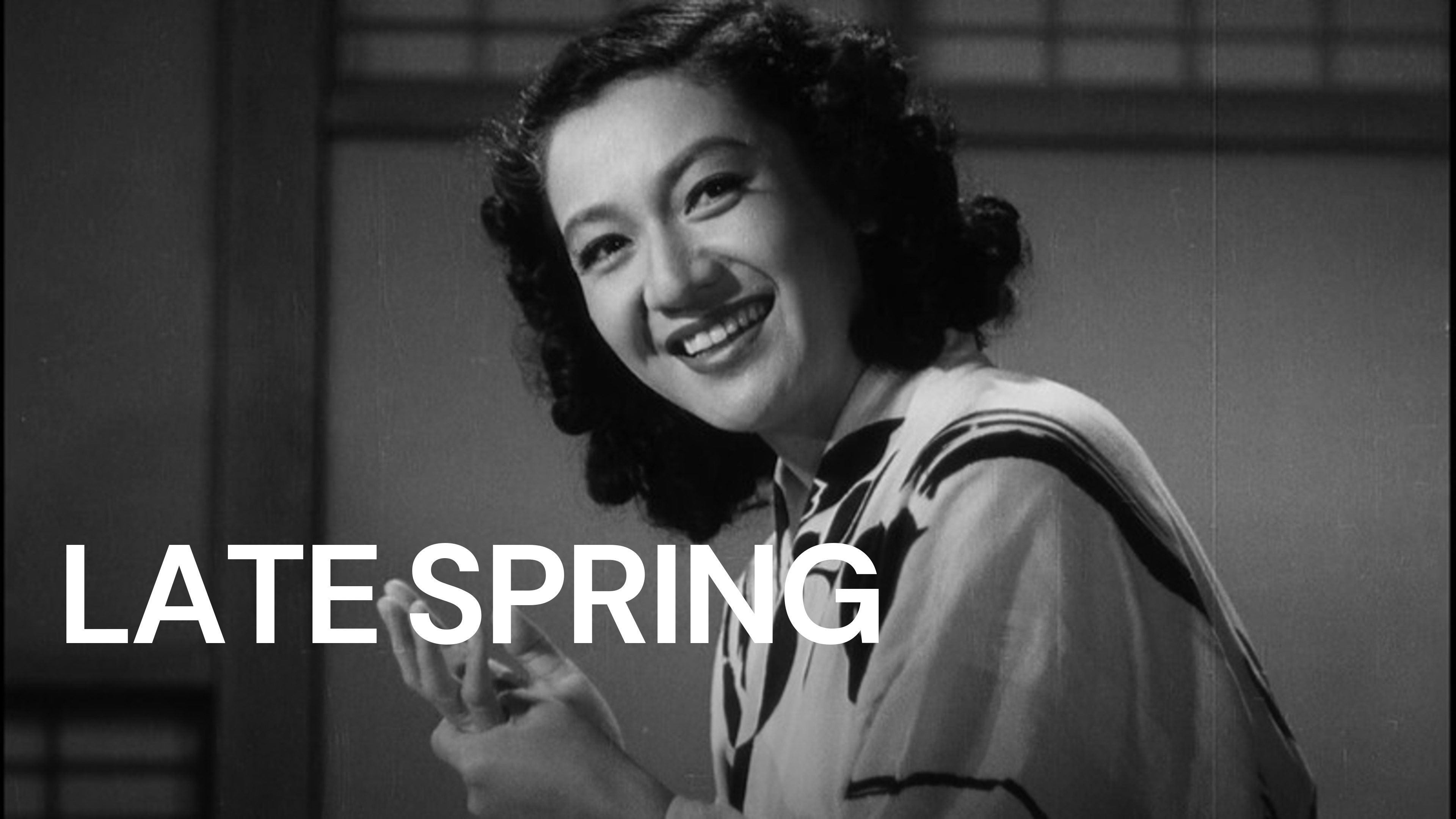
Late Spring is a classic Japanese film directed by Yasujir? Ozu. Released in 1949, it has since become one of Ozu’s most revered works and has left an indelible mark on the world of cinema. The film is a poignant exploration of family dynamics, societal pressures, and the complexities of love and relationships.
Set in post-World War II Japan, Late Spring tells the story of Noriko, a young woman who lives with her widowed father. As societal expectations mount for her to marry and start a family, Noriko finds herself torn between her own desires and the traditional values imposed upon her.
With its minimalistic style, understated performances, and profound emotional resonance, Late Spring showcases Ozu’s mastery of storytelling. In this article, we will delve into 37 fascinating facts about this influential movie, shedding light on its themes, production process, and lasting impact on the world of cinema.
Key Takeaways:
- Late Spring is a timeless Japanese film that explores family, sacrifice, and societal expectations, captivating audiences with its beautiful cinematography and emotional storytelling.
- The movie’s subtle and contemplative approach, along with its universal themes, has earned it international acclaim and a lasting impact on viewers, making it a cinematic masterpiece.
Late Spring is a 1949 Japanese drama film.
Directed by Yasujir? Ozu, Late Spring is a timeless classic in the world of cinema.
The screenplay was co-written by Ozu and Kogo Noda.
Ozu collaborated with Kogo Noda, a prominent screenwriter, to create the captivating story of Late Spring.
The film stars Setsuko Hara and Chishu Ryu.
Setsuko Hara and Chishu Ryu deliver remarkable performances, capturing the essence of the characters in the movie.
It explores the themes of family, tradition, and societal expectations.
Late Spring delves into the complexities of familial relationships and the clash between personal desires and societal obligations.
Yasujir? Ozu is known for his distinctive filmmaking style.
Ozu’s unique approach to storytelling, characterized by static shots and long takes, can be witnessed throughout Late Spring.
The film is set in post-war Japan.
Late Spring provides a glimpse into the cultural and social landscape of Japan during the post-war era.
It was the first installment of Ozu’s thematic trilogy, including Early Summer and Tokyo Twilight.
Ozu’s Late Spring set the foundation for a trilogy that further explores the complexities of family dynamics in Japanese society.
The movie emphasizes the importance of sacrifice for the sake of others.
Late Spring depicts the selflessness and sacrifice necessary to uphold familial duties, even at the expense of personal happiness.
The cinematography in Late Spring is meticulously composed.
Ozu’s attention to detail is evident in the beautifully crafted frames and the use of visual symbolism in the film.
It received critical acclaim upon its release.
Late Spring garnered praise from both critics and audiences, solidifying its place as a cinematic masterpiece.
The movie explores the tension between tradition and modernity.
Ozu skillfully portrays the conflicts arising from the clash between traditional values and the changing societal norms in post-war Japan.
Late Spring captures the essence of Japanese culture.
The film provides a window into the customs, etiquette, and social norms that are deeply ingrained in Japanese society.
It is a meditative and contemplative film.
Late Spring invites viewers to reflect on the deeper meanings of human relationships and the passage of time.
The movie’s pacing is deliberate and unhurried.
Ozu’s deliberate pacing allows the audience to fully immerse themselves in the emotions and subtleties of the characters’ experiences.
Late Spring has been hailed as a masterpiece of Japanese cinema.
The film’s profound storytelling and compelling performances have solidified its status as one of the greatest films in Japanese cinema history.
It highlights the sacrifices made by women in Japanese society.
Late Spring sheds light on the societal expectations placed on women and the sacrifices they often make for the well-being of their families.
The movie presents a nuanced depiction of parent-child relationships.
Ozu delicately portrays the complexities of the bond between parents and children, exploring themes of love, duty, and letting go.
Late Spring showcases Ozu’s mastery of subtlety.
The film’s nuanced performances and subtle gestures create a profound impact on the audience.
It raises questions about societal norms and individual happiness.
Late Spring challenges the audience to question the expectations imposed by society and the pursuit of personal fulfillment.
The movie’s black-and-white cinematography adds to its timeless appeal.
The use of black-and-white imagery adds a certain elegance and timelessness to the visual aesthetic of Late Spring.
It is considered one of Ozu’s most emotionally resonant films.
Late Spring’s exploration of love, loss, and the complexities of human relationships evokes a deep emotional response from viewers.
The film’s soundtrack further enhances the poignant moments.
The delicate and evocative soundtrack complements the narrative, heightening the emotional impact of pivotal scenes.
Late Spring showcases Ozu’s attention to everyday moments.
Ozu’s focus on seemingly ordinary moments elevates Late Spring, allowing the audience to find beauty in the simplicity of life.
The movie reflects Ozu’s minimalist approach to storytelling.
Late Spring’s minimalist narrative style prioritizes subtlety and introspection over grand gestures and dramatic plotlines.
It has influenced numerous filmmakers and directors.
Late Spring’s impact on the world of cinema can be seen in the works of filmmakers who were inspired by Ozu’s unique style.
The film’s universal themes resonate with audiences across cultures.
Late Spring’s exploration of love, sacrifice, and the complexities of human relationships transcends cultural boundaries.
It was added to the prestigious Criterion Collection in 2012.
Late Spring’s inclusion in the Criterion Collection speaks to its cultural and artistic significance in the world of cinema.
The movie’s final scene is particularly memorable.
The closing scene of Late Spring leaves a lasting impression, encapsulating the emotions and themes of the entire film.
Late Spring received international recognition at film festivals.
The film was celebrated at various international film festivals, further cementing its status as a cinematic gem.
It continues to be studied and analyzed by film scholars.
Late Spring’s depth and complexity make it a subject of study in film schools and academic institutions around the world.
The movie showcases the brilliance of Japanese acting.
Through the captivating performances of the cast, Late Spring showcases the talent and skill of Japanese actors.
It has a lasting impact on the viewer.
Late Spring’s thought-provoking narrative lingers in the minds of viewers long after the credits roll.
The film’s subtitled version received critical acclaim outside of Japan.
The subtitled version of Late Spring allowed international audiences to appreciate the film’s brilliance and garnered widespread acclaim.
It presents a poignant depiction of societal pressures.
Late Spring sheds light on the weight of societal expectations and the impact they have on individuals.
The movie’s nuanced portrayal of love sets it apart.
Late Spring’s exploration of love in all its complexities distinguishes it as a masterful work of cinema.
It exemplifies the power of storytelling.
Through its beautifully crafted narrative, Late Spring demonstrates the transformative and emotive power of storytelling.
Late Spring remains a timeless masterpiece.
The enduring beauty and relevance of Late Spring have cemented its place as a cinematic masterpiece that stands the test of time.
Conclusion
Overall, Late Spring is a timeless masterpiece that continues to captivate audiences with its deep emotional impact and powerful storytelling. With its rich character development, nuanced performances, and thought-provoking themes, the film explores the complex dynamics of family relationships and the societal pressures faced by individuals. Yasujir? Ozu’s meticulous attention to detail and mastery of visual storytelling shines through in every frame, creating a visually stunning and emotionally resonant cinematic experience.
FAQs
Q: Who directed Late Spring?
A: Late Spring was directed by Yasujir? Ozu, one of the most influential and celebrated directors in Japanese cinema history.
Q: When was Late Spring released?
A: Late Spring was released in 1949 in Japan.
Q: What is the storyline of Late Spring?
A: Late Spring follows the story of a widowed father who wants his 27-year-old daughter to get married and start a new chapter in her life. However, the daughter is content with her current life and does not want to leave her father.
Q: What are the notable performances in Late Spring?
A: Late Spring features remarkable performances by Setsuko Hara as the daughter, and Chish? Ry? as the father. Their subtle and nuanced portrayals bring depth and realism to their respective characters.
Q: Is Late Spring available with subtitles?
A: Yes, Late Spring is widely available with English subtitles, allowing international audiences to appreciate the film’s beauty and significance.
Q: Has Late Spring won any awards?
A: While Late Spring did not win any major international awards, it has been praised by critics and filmmakers alike for its artistic and narrative achievements.
Q: Can you recommend other films by Yasujir? Ozu?
A: Absolutely! Some of Yasujir? Ozu’s other notable films include Tokyo Story, Floating Weeds, and Early Summer.
Late Spring's enduring legacy continues to captivate film enthusiasts. Dive into more cinematic treasures, like the classic film The Thin Man Goes Home, which showcases the charm of a bygone era. For a poignant family drama, Still Walking offers a moving portrayal of generational dynamics. Explore the artistry of Yasujiro Ozu further with A Story of Floating Weeds, a testament to his filmmaking prowess. Each movie brings its own unique flavor, inviting viewers to embark on a journey through the rich tapestry of cinema.
Was this page helpful?
Our commitment to delivering trustworthy and engaging content is at the heart of what we do. Each fact on our site is contributed by real users like you, bringing a wealth of diverse insights and information. To ensure the highest standards of accuracy and reliability, our dedicated editors meticulously review each submission. This process guarantees that the facts we share are not only fascinating but also credible. Trust in our commitment to quality and authenticity as you explore and learn with us.


